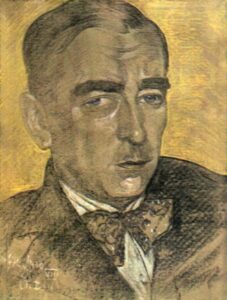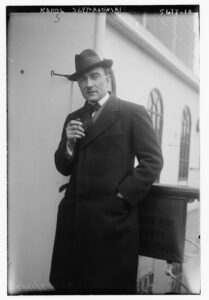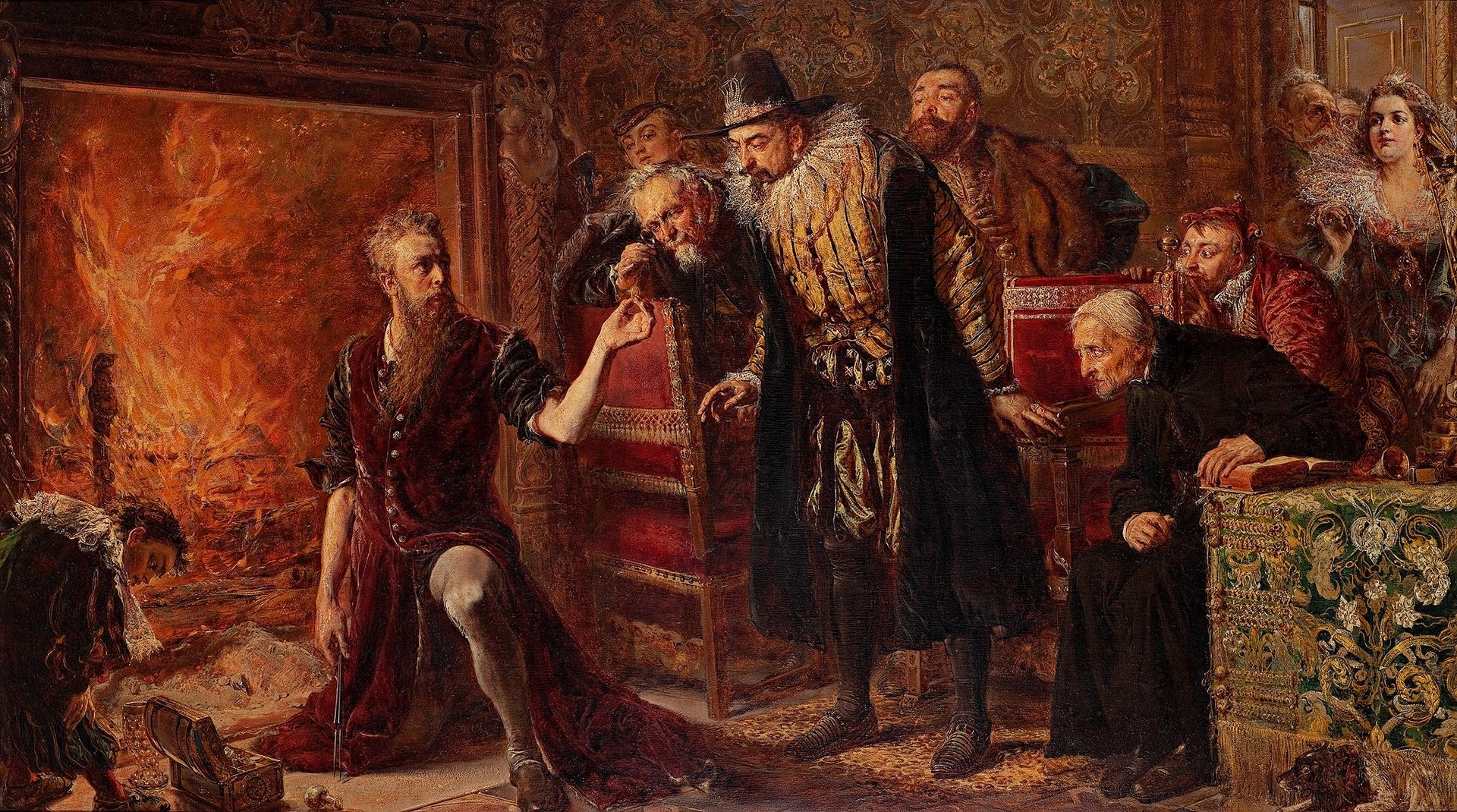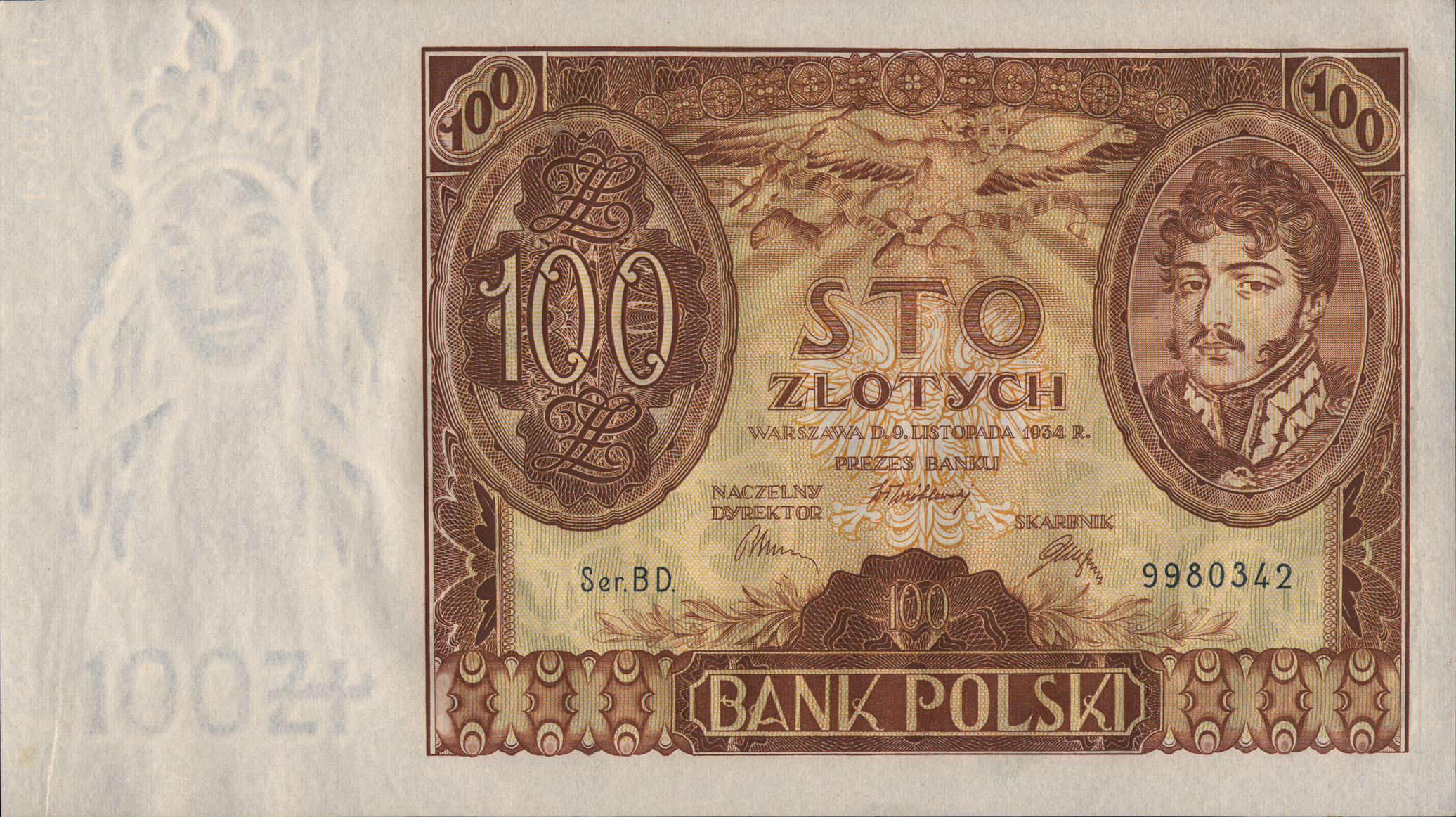‘Let it be “national” but not “provincial”,’ – this is what Karol Szymanowski wrote in 1920 (‘Uwagi w sprawie współczesnej opinii muzycznej w Polsce’, trans. ‘Remarks on contemporary musical opinion in Poland’), referring to the desired shape of new Polish music and weaving it into the space of widely understood universal humanism. During the inter-war period, he was an iconic figure in the domestic musical environment. He fascinated others both through his personality and the expressiveness of the music he created. Thanks to his encouragement, young artists travelled en masse to Paris in order to hone their composition skills, which Szymanowski regarded as a fundamental and necessary condition for making music. He also demanded high competence in the craft from performers and critics alike. For many years, he fought for the modern shape of Polish music and its deserved place on the musical culture map of Europe and the world.
by Iwona Lindstedt
Szymanowski shaped his own musical style (he was the author of over 80 works) in the turbulent times of the turn of the centuries, drawing on a variety of sources and absorbing a wide range of inspirations. He was born on 3 October 1882 in Tymoszówka (now Tymoshivka), an estate of the Chyhyryn district, in the Kyiv Governorate of the Russian Empire, former Polish Borderlands (presently Ukraine). He had been exposed to music from his earliest years – the drawing room of the Tymoszówka manor had teemed with it. His father, Stanisław Korwin-Szymanowski, had played the piano and cello, and was also Karol’s first teacher. Even as a child, he wrote piano pieces and songs for home use, and even composed his own children’s opera entitled The Golden Peak. In fact, all five Szymanowski children were artistically talented. Anna, the eldest, graduated in painting, Feliks became a pianist, Zofia a writer and translator, and Stanisława a singer.
After studying at the Gustav Neuhaus School of Music in Elisavetgrad (presently Kropyvnytskyi in Ukraine) and passing his high school exam, Szymanowski left for Warsaw in 1901, where he studied harmony privately for two years with Marek Zawirski, and counterpoint and composition with Zygmunt Noskowski – a teacher of an entire generation of Polish composers. While listening to rehearsals and concerts at the Warsaw Philharmonic Orchestra, he trained in orchestration and thoroughly familiarised himself with the technique of playing various instruments. He composed new works – including two cycles of variations for the piano and the Etude in B flat minor, which proved to be one of his most popular compositions (it was greatly popularised by Ignacy Jan Paderewski, who included it in his piano repertoire). This first stay in Warsaw also resulted in him befriending artists who were later to play important roles in his life – conductor Grzegorz Fitelberg, violinist Paweł Kochański, and pianist Artur Rubinstein.

However, Warsaw’s musical milieu was very conservative, while the young composer’s interests extended far beyond what the musical life of the capital could offer him. He and his friends therefore learned about the new music of his time mainly through sheet music – piano extracts of works by Richard Wagner or Richard Strauss. The young composers (besides Szymanowski also Grzegorz Fitelberg, Ludomir Różycki and Apolinary Szeluto) soon realised that their further musical development required breaking out of their native environment. Together, they embarked on a course of action that would ensure their own works were presented in a wider forum, while simultaneously promoting new Polish music. Thus, in the autumn of 1905, an association was formed under the name of the Young Polish Composers’ Publishing Company. Considerable financial assistance of the group’s patron, Prince Władysław Lubomirski, made it possible to found a publishing house based in Berlin, owing to which the first printed copies of Szymanowski’s works appeared on the European music market, which also sounded on the concert stages of Warsaw and Berlin.
Over the following years, Szymanowski succumbed to a strong fascination with late Romantic German music. However, since his own works written under the influence of the styles of Wagner, Strauss or Max Reger were not appreciated by the critics, the composer experienced a creative crisis. He overcame it, however, by composing works that are generally regarded as an original synthesis of this phase of his oeuvre and a manifestation of the birth of an individual style (e.g. Symphony No. 2 written in 1909–1910 and Piano Sonata No. 2 from 1911). In the meantime, he had also written an operetta which, under the title of Lottery for Husbands or Fiancé No. 69, had all the qualities necessary to conquer Viennese stages. It was not performed at the time, however, and the premiere took place almost a century later at the Kraków Opera.
The years leading up to the First World War are generally referred to as the ‘Viennese period’ in Szymanowski’s oeuvre. They played an important role in his career (the composer was associated at the time with the Universal-Edition publishing house, which had a global reach) and brought new inspirations, extending beyond the almost uncritically admired circle of German culture. It was then that he became acquainted with the music of Claude Debussy and Igor Stravinsky, which he heard during performances of Sergei Diaghilev’s famous ballet company. Two trips to Italy had their momentous role in the transformation of Szymanowski’s creative principles at the time, which he took in the spring of 1910 and 1911. These aroused his immense interest in Mediterranean culture as well as in exotic and ancient themes. They also shaped his artistic program for the coming years. When he returned to Tymoszówka in 1914, after his third trip to Italy and North Africa, he decided that his music would henceforth draw on the work of the French Impressionist composers and Oriental culture. He also strengthened his desire to express literary content through music. He realised these ideas, for example, in his Symphony No. 3 ‘Song of the Night’, to which he introduced a tenor solo and choir along with a text by the medieval Persian mystic Jalāl al-Dīn Muḥammad Rūmī. As a result of his collaboration with Paweł Kochański, he wrote a cycle of violin pieces entitled Mity (Myths) and, during the last summer spent at Tymoszówka, two cantatas – Agave and Demeter to words by Zofia Szymanowska.

As a result of the revolutionary turmoil, the Szymanowskis had to leave Tymoszówka in 1917 (the Tymoszówka manor house burned to the ground shortly afterwards). They settled in Elisavetgrad, where Karol began writing his novel Efebos, tackling the philosophical and moral issues that had been bothering him for a long time. It was also at this time that the initial draft of the ‘Sicilian drama’ – the future opera King Roger (completed in 1924) – emerged, in collaboration with Jarosław Iwaszkiewicz. At the end of 1919, Szymanowski finally decided to return to Poland. At that time, he found that the reluctant attitude of the Warsaw music world towards his work had not changed at all. However, he actively joined in building the musical life of the reborn Poland. He consolidated his position by engaging in polemics in the press in defence of his artistic ideology. He repeatedly wrote about Chopin, the national style, tradition and modernity in music, and the importance of music in society. At the same time, he travelled extensively – including to Paris, which became a place of compositional success and observation of contemporary European music for him, as well as to the United States. Returning from one of his journeys, he met Igor Stravinsky in person and, impressed by his new works, was inclined to seek inspiration in Polish folk music.
The first trace of another transformation of his style was the cycle of songs entitled Słopiewnie (Wordsongs) (1921) to the words of Julian Tuwim, where Szymanowski attempted to create a Proto-Slavic verbal-musical idiom. On the other hand, Stabat Mater, written in 1925–1926, was regarded as a type of ideal of national music and simultaneously a manifesto of the composer’s personal religious feelings. Of greatest significance for Szymanowski’s later direction, however, was his discovery of music from the highland region of Podhale, to which he was introduced by musicologist Adolf Chybiński, who drew the composer’s attention to the original features of highland melodies. This fascination resulted in a project for a highland-style ballet, for which Szymanowski collected material in Zakopane (he completed Harnasie in 1931, and the stage premiere took place in 1935).
Although Karol Szymanowski did not walk in the mountains himself (he had a disability since childhood resulting from a leg disorder that had been badly treated), he knew Zakopane and Podhale very well, which had become his home. He enjoyed the respect and friendship of the highlanders, who invited him to family celebrations, sleigh rides, and spontaneous parties during which he communed with the art of the Podhale people, especially its musical forms. However, before his permanent move to Villa Atma in Zakopane, where his last works were composed, such as Symphony No. 4 ‘Symphonie Concertante’ for piano and orchestra (1932), Violin Concerto No. 2 (1933) tinged with highland touches, the lyrical Litany to the Virgin Mary (1933) or the two Mazurkas for piano (1934), which grew out of Chopin’s tradition, he twice attempted to exert a direct influence on the modern shape of Polish musical education.

In 1927, declining an offer to become director of the conservatory in Cairo, he accepted a similar post in Warsaw. However, numerous attacks from conservative-minded representatives of the musical community, as well as ill health, caused him to resign after two years. A treatment received in Switzerland stopped the development of tuberculosis for a while, so when the Warsaw Conservatory was raised to the rank of a Higher Music School with academic rights, Szymanowski returned there with the hope of completing the reforms. He took up the post of its first rector, which was of great importance to the young composition students who saw in him an unquestionable authority, not only artistically, but also ethically. However, in 1932, faced with escalating conflicts, he resigned again.
In spite of his widespread respect, high position and honours, towards the end of his life, Szymanowski faced financial problems. He was not a virtuoso, but he gave many concerts, as his battle with advanced tuberculosis required expensive treatments. The crisis came in 1937. Attempts to save the composer (he was taken to a sanatorium in Lausanne) proved late at the time, and on 29 March, 15 minutes after midnight, Karol Szymanowski died in the arms of his sister Stanisława. The funeral ceremonies lasted more than a week. Some of them took place in Warsaw, and the coffin was later transported to Kraków and laid in the Crypt of the Most Distinguished Poles at the church at Skałka on 7 April. Szymanowski was also posthumously awarded the Grand Cross of the Order of Polonia Restituta, First Class by President Ignacy Mościcki. Last respects were paid to the artist who had ‘brought glory to the world […] to his homeland’, a Polish artist ‘bone of bone, blood of blood, thought of thought and feeling of feeling’ (from a speech by the Deputy Minister of Religious Denominations and Public Enlightenment). However, Karol Szymanowski’s most important legacy remained his vision of the role of Polish music as equal to European, and his sense of responsibility for its quality and further development. This legacy was taken up not only by Szymanowski’s immediate successors, but also by their continuators, and ‘Karol from Villa Atma’ fully deserves to be called the father of 20th-century Polish music.
Author: Prof. Iwona Lindstedt – Professor at the Institute of Musicology, University of Warsaw
Translation: Mikołaj Sekrecki





